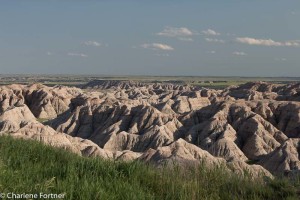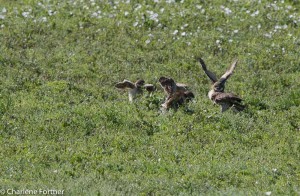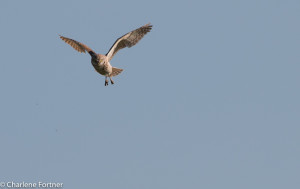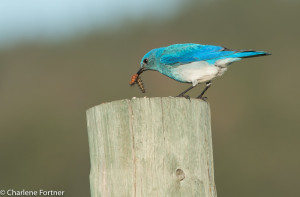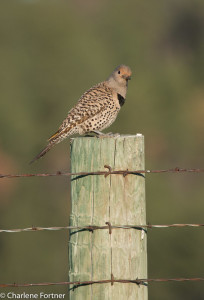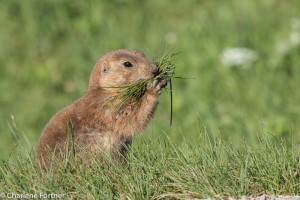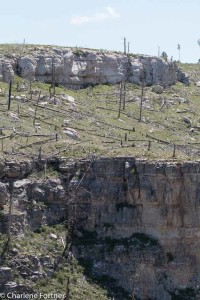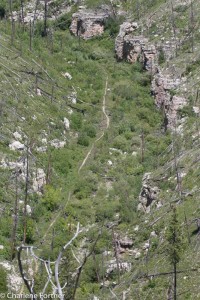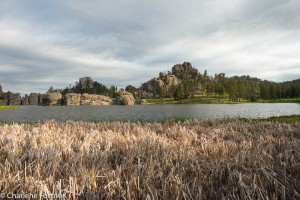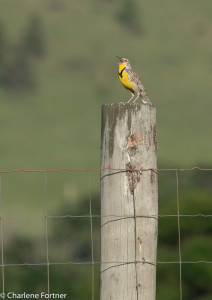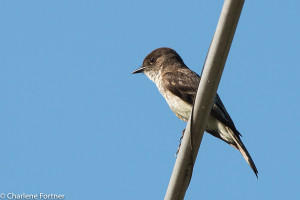I awoke earlier than my alarm clock. Perhaps it was my overall excitement or that I don’t sleep as heavily when I tent camp? I cleaned up my campsite and walked Ari around the state park before sunset and headed off to Squaw Creek NWR.
My first impressions of this refuge was its overall size. I grossly underestimated the time it would take me to complete the ten mile wildlife loop! Despite the poor lighting of early morning and later overcast conditions, I enjoyed good sightings of American White Pelicans, Dickcissels, and even a Great Horned Owl. Unfortunately, very few decent pictures came from the excursion, but this is a place that I hope to revisit one day and would highly recommend. The state park that I stayed at was only 15 minutes away.
Heading into Nebraska I ran into a storm cloud so beautiful and expansive that I don’t believe any amount of wide-angle lens could have done it justice. From the outside it was breath-taking; inside it was nasty with heavy wind and downpours for nearly 120 miles! Coming out of it into the west I was met with bright blue skies and fluffy white clouds for the remainder of the day. The weather alone would have made the rest of my drive enjoyable, but I did not count on the spectacular scenery and birding of my next location…
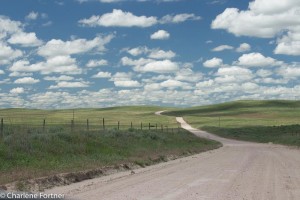
Road to Crescent Lake NWR
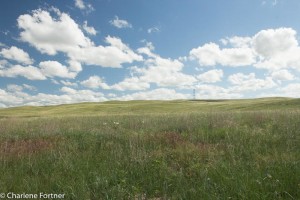
Crescent Lake NWR
Crescent Lake NWR is so out-of-the-way you may think you are lost getting there. Both roads getting to/from this location are difficult and in hindsight a 4-wheel drive would have been advisable. I would not attempt this journey if there has been recent rain or several days of rain as the road north from Oshkosh, NE is a soft dirt road with occasional gravel for traction (Rd. 82 & Rd. 181). The road from the north from Lakeside is paved in places, but might as well had not been due to the potholes and poor quality. Both roads were narrow allowing for the passage of only one vehicle in approximately 90% of their duration. The northern road looks to be at risk for washing out, as water from the marshes sometimes stood on the road or came up to the broken pavement. When a vehicle approached it was not impossible to pull off to allow them to pass on either road, just take care. All of the areas are open rangeland and any breaks in the fence the road takes there are cattle guards, rows of spinning pipe laid into the road that cows do not like to cross. I found it best to cross over these at a decent speed. The road from Antioch that makes up the northwest portion of the wildlife drive was closed, so I can’t attest to its condition. All that being said, This route was spectacular in both scenery and birding opportunities, a trip that I KNOW I will attempt again in this lifetime and encourage those who have a chance to go.
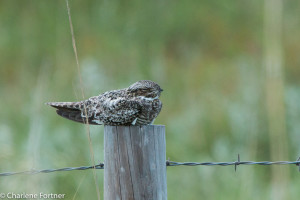
Possibly a Common Nighthawk?
Right off, turning onto Rd. 181 I happened to see a few Horned Larks, a Lark Sparrow and what I think is a Common Nighthawk. Sleeping on a fence post, the Nighthawk seemed oblivious to my presence and from my car I was only about 8-10 feet away. A few miles down I spotted several Meadowlarks, a species that I have been struggling to find at home. Thanks to the overlap in their range (hint a note of sarcasm), I’ll have to examine my photographs more carefully to identify whether I saw Eastern, Western or both.
The refuge itself did not present as rich of a wildlife population as the roads to and from it, but I did see more Meadowlarks and sparrows along the road. Several large lakes had a few ducks and geese. Continuing north from the refuge towards Antioch the habitat turned more marsh-like with large expansive ponds and standing water pools. Great sightings of a few new species for me occurred here.

Long-billed Curlew

Upland Sandpiper
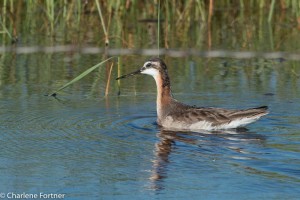
Wilson’s Phalarope
I witnessed the Wilson’s Phalaropes circling in the water foraging for food. I saw probably two dozen of these birds in several ponds. For some reason I had thought they would be larger. I came across two Long-billed Curlew walking in the grass. Upon seeing me, one barked up a strange trumpeting call. A mile down the road on several fence posts sat what was clearly a shorebird, but very strange in body: Upland Sandpipers!
Other new species for me: Yellow-headed Blackbird, Redhead, Ruddy Duck in breeding plumage (bright blue bill) and an Eared Grebe.
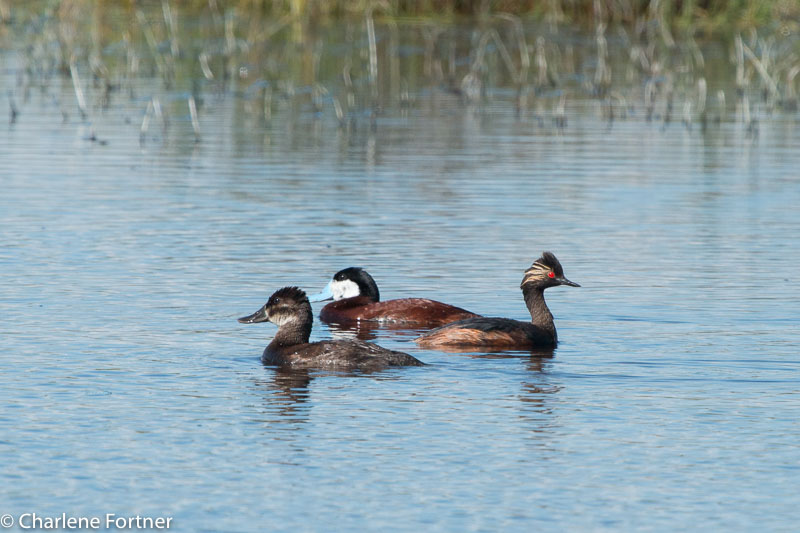
“Just Passing Through”
Ruddy Ducks & Eared Grebe



